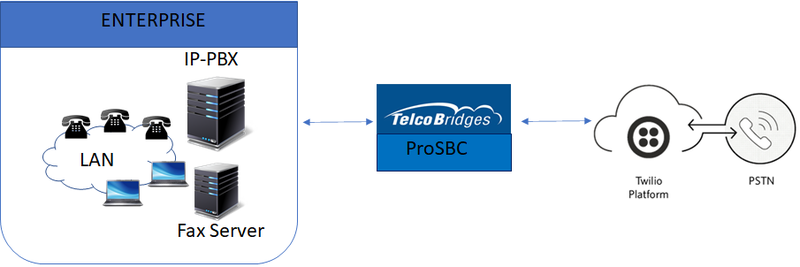ProSBC:Twilio Trunking:Example A
From TBwiki
(Difference between revisions)
(→NAP Configuration for Twilio Elastic Trunking) |
|||
| Line 37: | Line 37: | ||
* See [[Toolpack:Allocating a SIP Network Access Point (NAP) SBC A|Create SIP NAP]] | * See [[Toolpack:Allocating a SIP Network Access Point (NAP) SBC A|Create SIP NAP]] | ||
| + | In this example, we will use telcobridges.pstn.twilio.com trunk information | ||
| + | |||
| + | [[Image:twilio_nap.png]] | ||
| + | |||
| + | * [[Parameter: Name|Name]] | ||
| + | * [[Parameter: Default Profile|Default Profile]] | ||
| + | * [[Parameter: Proxy Address|Proxy Address]] | ||
| + | * [[Parameter: Proxy Port Type|Proxy Port Type]] | ||
| + | * [[Parameter: Proxy Port|Proxy Port]] | ||
| + | * [[Parameter: Poll Remote Proxy|Poll Remote Proxy]] | ||
| + | * [[Parameter: Accept only authorized users|Accept only authorized users]] | ||
Revision as of 02:51, 4 March 2021
Contents |
Introduction
SIP Trunk Configuration Instruction with Twilio Elastic trunking Example Configuration provides you with a step-by-step SIP Trunk Configuration of ProSBC with Twilio Elastic Trunking, using the Web Portal configuration tool. Complete general installation configuration steps, before you begin configuring your specific scenario. In this guide FQDN (telcobridges.pstn.twilio.com) configured in the Twilio console. You can find more details on how to create an Elastic Trunking in Twilio from the following link Create and Configure Trunks
Twilio Elastic SIP Trunk Example
Configuration Steps
| (Step 1) Create IP Network |
(Step 2) Create Protocol Stack |
(Step 3) Create Call Route |
|---|---|---|
|
NAP Configuration for Twilio Elastic Trunking
- See Create SIP NAP
In this example, we will use telcobridges.pstn.twilio.com trunk information

